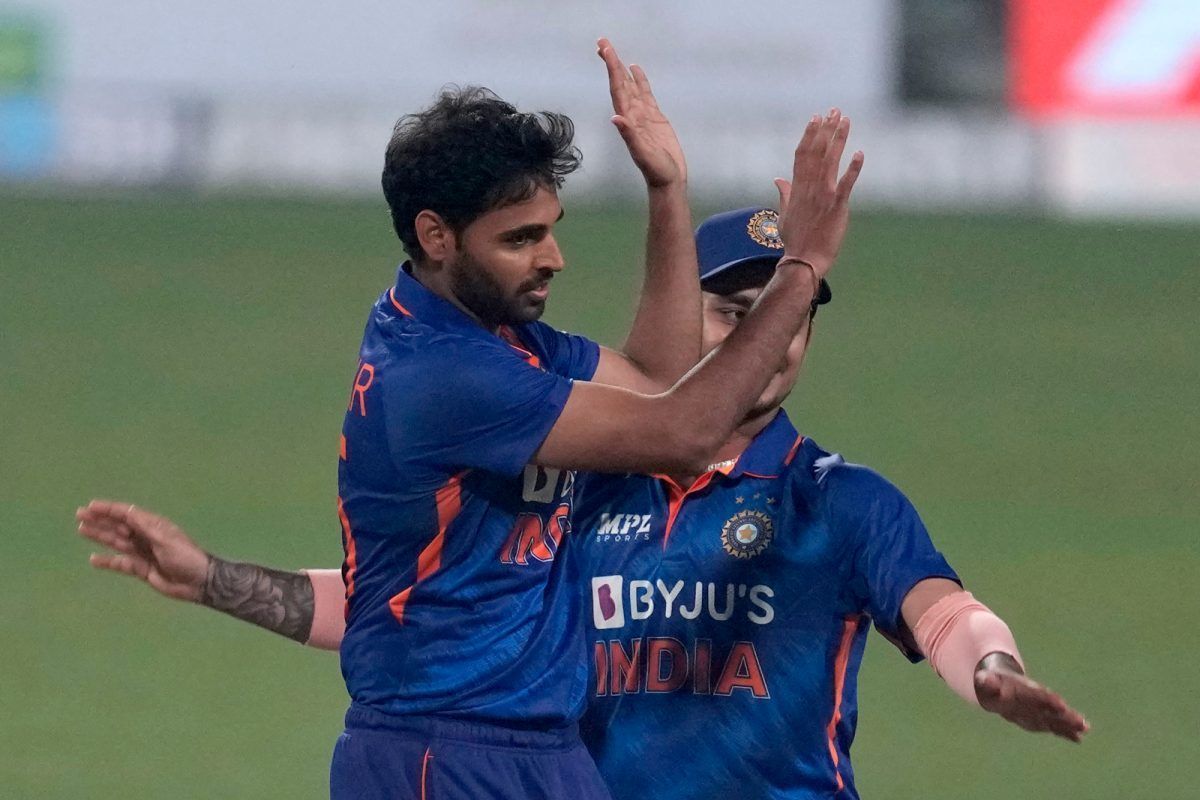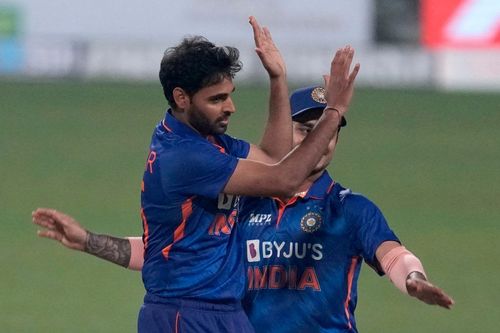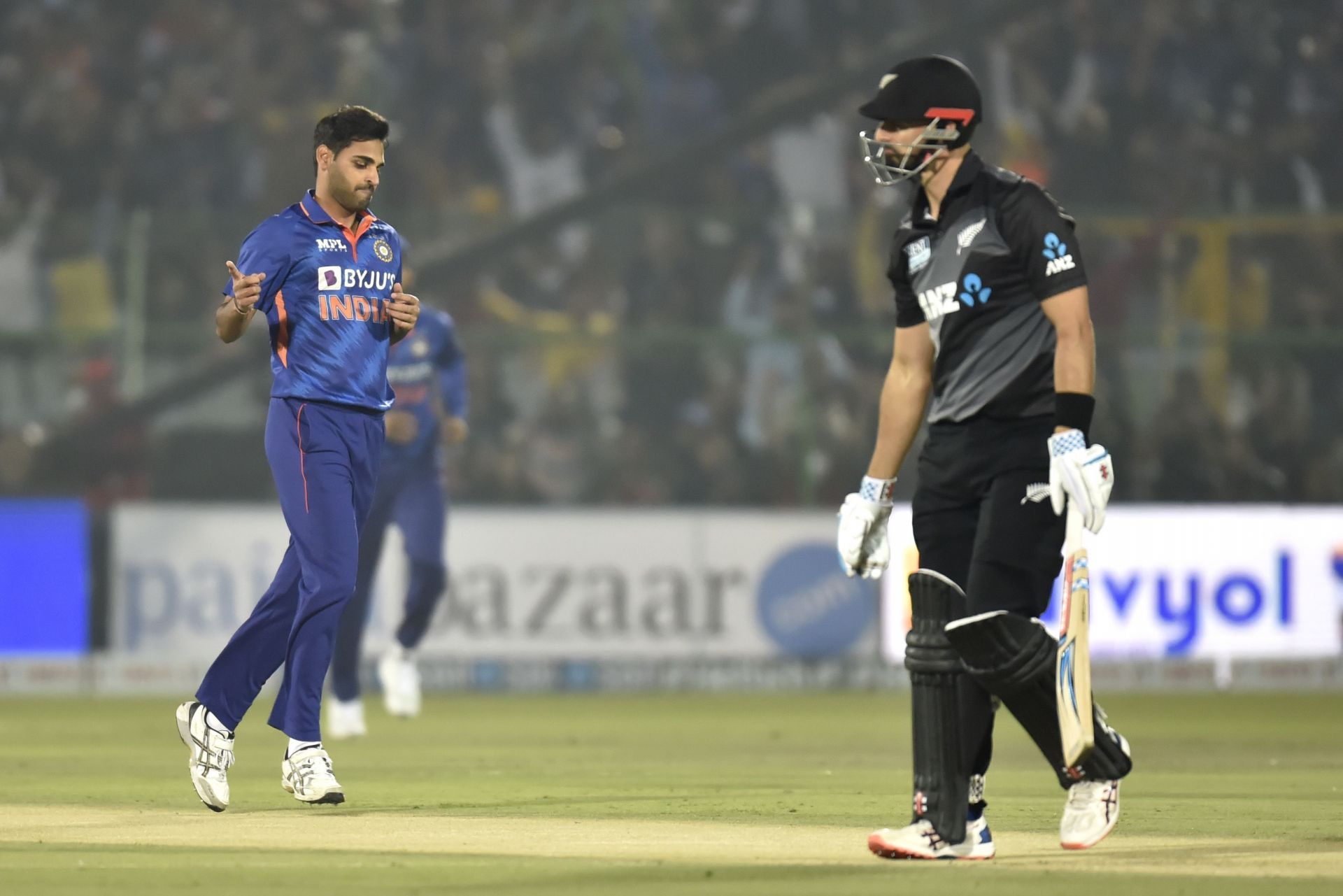
Don't write Bhuvneshwar Kumar off just yet

It’s December 2012. India have just steered away from the 2011 World Cup hangover and are looking for their next all-conquering crop of fast bowlers. But there is a spin to this story. Ashish Nehra and Munaf Patel have not played many games since that tournament, and Sreesanth has also fallen down the pecking order, but most importantly, Zaheer Khan’s powers seem to be waning.
So when Pakistan come calling in 2012 (yes, it used to happen then), India have many rough edges to smoothen out. Not only do they need someone to keep a lid on the run-scoring in white-ball cricket, but they require a pacer who can rattle the opposition at the start of the innings.
On Christmas that year, they are asked to bat first on what looks a slightly tricky track at the M Chinnaswamy Stadium. India huff, puff, and only put together 133/9 – a total that doesn’t seem enough, despite the assistance on offer.
Almost all of India has written off the Men In Blue. The bowling unit, comprising of Ashok Dinda, Ishant Sharma, Ravindra Jadeja and Yuvraj Singh doesn’t inspire much confidence either. Oh, by the way, there is a debutant, Bhuvneshwar Kumar, in town too.
For all intents and purposes, India have no business making a match of this. Pakistan don’t have a world-beating batting line-up but have adequate batters to chase down such a target. But then, something changes.
Bhuvneshwar, who has only just overcome the butterflies in his stomach, marks out his run-up. The first delivery he bowls is quite unthreatening. To an extent, it is a bit of an anti-climax, considering thousands are waiting for India to conjure magic.
The next ball he bowls hoops away from Nasir Jamshed (at the time, arguably Pakistan’s best white-ball batter). He has a fiddle at it but gets nowhere close. The process repeats itself on the fifth ball and even though he gets a brace in between, there is a slight furrowed brow on Jamshed’s forehead.
He, and millions around the country, had heard about Bhuvneshwar’s ability to swing the ball. But he was still taken aback. Deep down, though, he must have thought to himself that Bhuvneshwar is a one-trick pony who only angles the ball across the left-handed batter.
The fast bowler, on the other hand, smirks to himself. He understands what the batter is expecting. More tellingly, he knows how to outfox him because, well, in contrast to what Jamshed thinks, the seamer can dart the ball the other way too.
He runs up to bowl the final ball of the 1st over. The ball is on a string as it lands somewhere around middle and off stump. Jamshed, owing to the evidence he has gathered, is not at all worried. This, too, according to him, will slant away. It doesn’t. It snakes into him and leaves his stumps in a mess.
For a quick moment, he is reluctant to believe that he has been flummoxed so comprehensively. He sees his off stump flattened and he, along with millions around the country, starts believing that a star has been born.
Bhuvneshwar repeats that trick with Umar Akmal an over later. Though India eventually lose the game, Bhuvneshwar ends with figures of 4-0-9-3 – that too on his international debut.

Cut to 2022. A lot of that positivity, optimism and swing has evaporated for the fast bowler. A month ago, he was a part of the Indian ODI side that toured South Africa. He only returned two wicket-less spells (8 and 10 overs) and conceded 67 and 64 runs respectively. Alarmingly, the movement that had defined his early career had gone amiss. His accuracy also left a bit to be desired.
Thus, when he was named in India’s T20I squad to face the West Indies, many were left scratching their heads. Bhuvneshwar, for those unaware, seems unlikely to feature in Test cricket moving forward and barring any spectacular comebacks, seems to have run his ODI race too. Doesn’t make much sense to include a 32-year-old fast bowler whose powers are declining then, eh?
Bhuvneshwar Kumar has been brilliant against West Indies
Over the course of the current rubber, though, Bhuvneshwar has proved that there is plenty of logic to his inclusion. Not just in terms of the sheer experience he brings to the fore, but also because his skill-set (when at his best obviously) is still not rivaled in India (arguably across the globe too).
In the 1st T20I, he swung the ball prodigiously at the start. It led to him conceding a few runs but he got the better of Brandon King, with the batter having no clue how much the ball would move and when.
A match later, the swing returned for Bhuvneshwar. In the past few years, he has rarely been able to stitch together consecutive games where he dominates with his swing bowling. This, however, was the refreshing aberration he and India were craving.
He didn’t get any wickets on Friday, but did enough to keep the West Indians in check – something that allowed India to apply the squeeze and push the required run rate north of 10 runs per over.
Just as impressive was Bhuvneshwar’s ability to remain equanimous at the death. By the time he came on to bowl, Nicholas Pooran and Rovman Powell had embarked on their rampage. West Indies needed 63 runs from five overs but with two powerful batters at the crease, they would have still fancied their chances.
The 16th over Bhuvneshwar delivered only went for 10 runs. It also included a potential wicket-taking opportunity – a chance the pacer grassed himself. But it stemmed the run-flow and made an already tough task even more tedious.
The fast bowler’s crowing jewel arrived in the 19th over. At the stage, the West Indies had just managed to keep themselves in the game (they needed 29 runs off 12 balls), and a massive penultimate over would have swung the tide in their favor. Bhuvneshwar had other ideas.
He telegraphed to the batters what he intended to do. He was bowling to the longer leg-side (for Powell) boundary and executed his plans to perfection. The impressive bit was that the batters knew what Bhuvneshwar wanted to do. Yet, they couldn’t get on top of him.
A mix of cutters, slower deliveries and yorkers later, the seamer outwitted Pooran and laid the foundation for a series-clinching victory. The hosts only won the game by 8 runs, hinting that if Bhuvneshwar hadn’t been at his best, they might have lost altogether.
Apart from illustrating that there is nothing quite like experience in international cricket, the Sunrisers Hyderabad seamer also portrayed that he has plenty left in the tank. And that he, unlike what has been the consensus lately, should not be written off just yet.
To be fair to Bhuvneshwar, he has made a habit of defying odds. Remember that game in Bengaluru on 25th December 2012, where everyone thought India didn’t have a sniff, especially with a lean-framed fast bowler bowling what can be termed a tad quicker than military medium? They did make a decent fist of it – all because of Bhuvneshwar.
There were also notions that he couldn’t sustain himself at the death because he just didn’t have the requisite pace. He is, as things stand, one of India’s most accomplished death bowlers.
The biggest positive out of this series, though, is the swing that he has managed to generate. Despite his prowess elsewhere, it is the movement with the new ball that distinguishes Bhuvneshwar. And as long as he keeps getting it, he will do just fine.
The displays against the West Indies might not have been as headline-grabbing as the ones against Pakistan early in his career. The ball might not have swung as much as it did back then and there are certainly lesser wickets to show for his toil too.
But there is just enough – enough to make India want to persist with Bhuvneshwar a touch longer than they would’ve thought was possible, even till a month ago.